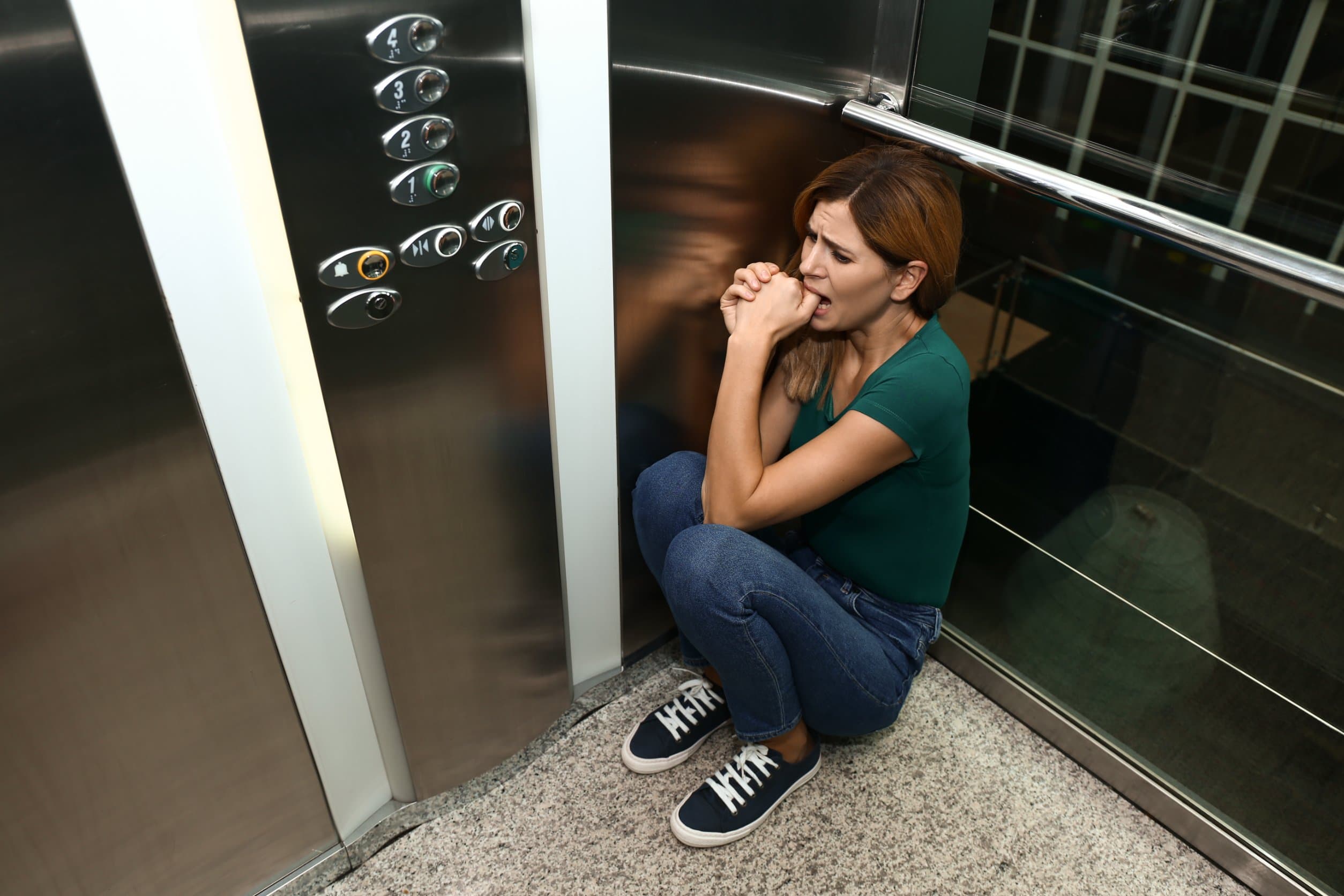
Key facts
- Claustrophobia is the fear of being in an enclosed space.
- Common situations that can trigger claustrophobia include being in lifts, tunnels, cars, planes or crowded rooms.
- Claustrophobia can cause intense anxiety and/or panic attacks.
- Panic attacks can cause overwhelming feelings of anxiety, as well as physical symptoms, such as a racing heartbeat, shortness of breath and sweating.
- Claustrophobia can be successfully treated with psychological therapies. This includes cognitive behavioural therapy (CBT) and self-exposure therapy.
What is claustrophobia?
Claustrophobia is a type of phobia. A phobia is an irrational or disproportionate fear of an object, activity or situation. People who are claustrophobic have an intense, irrational fear of enclosed spaces.
Being claustrophobic is a very individual experience. Some people only feel mildly anxious when they are in a confined or crowded space. Others feel extremely anxious and can experience a panic attack.
Many situations can trigger claustrophobia, including being in:
- lifts
- tunnels
- trains and planes
- crowded rooms or rooms with no windows
- public toilets
- cars with central locking
What are panic attacks?
Claustrophobia commonly causes panic attacks. A panic attack is a sudden, intense episode of fear. The physical and mental sensations can be overwhelming.
Along with overwhelming feelings of anxiety, panic attacks can cause physical symptoms such as:
- rapid heart rate, rapid breathing rate or shortness of breath
- sweating and trembling
- feeling weak or dizzy
- hot flushes or chills
- nausea
- numbness or a tingling sensation
Not everyone with claustrophobia will have panic attacks.
How does claustrophobia affect people’s lives?
Claustrophobia can make people feel very uncomfortable and anxious in confined spaces. Panic attacks may be so frightening that a person might try to avoid situations where an attack happened.
People with claustrophobia might change their behaviour and routines because of the fear of having a panic attack. In severe cases, some people may not feel able to leave their home. If this happens, it’s important to seek help.
How is claustrophobia treated?
Claustrophobia can be successfully treated.
Your doctor may advise you try psychological treatment (talking therapies) such as cognitive behavioural therapy (CBT). Your therapist may also recommend a type of therapy known as desensitisation, or self-exposure therapy. In self-exposure therapy, you gradually expose yourself to the situation which usually causes you fear, and in time, your anxiety decreases.



